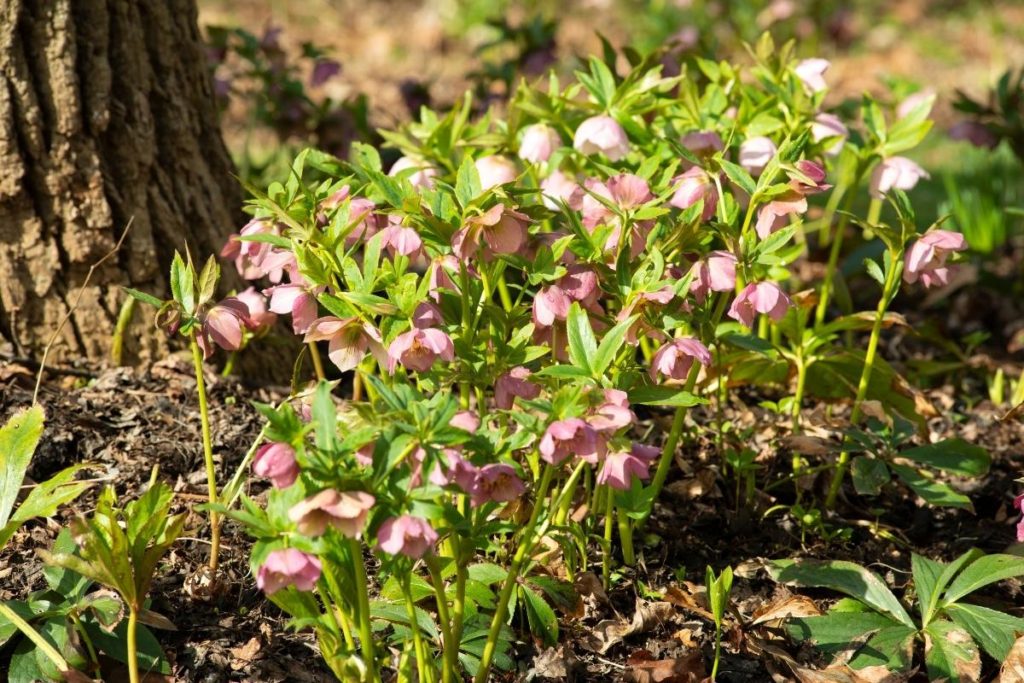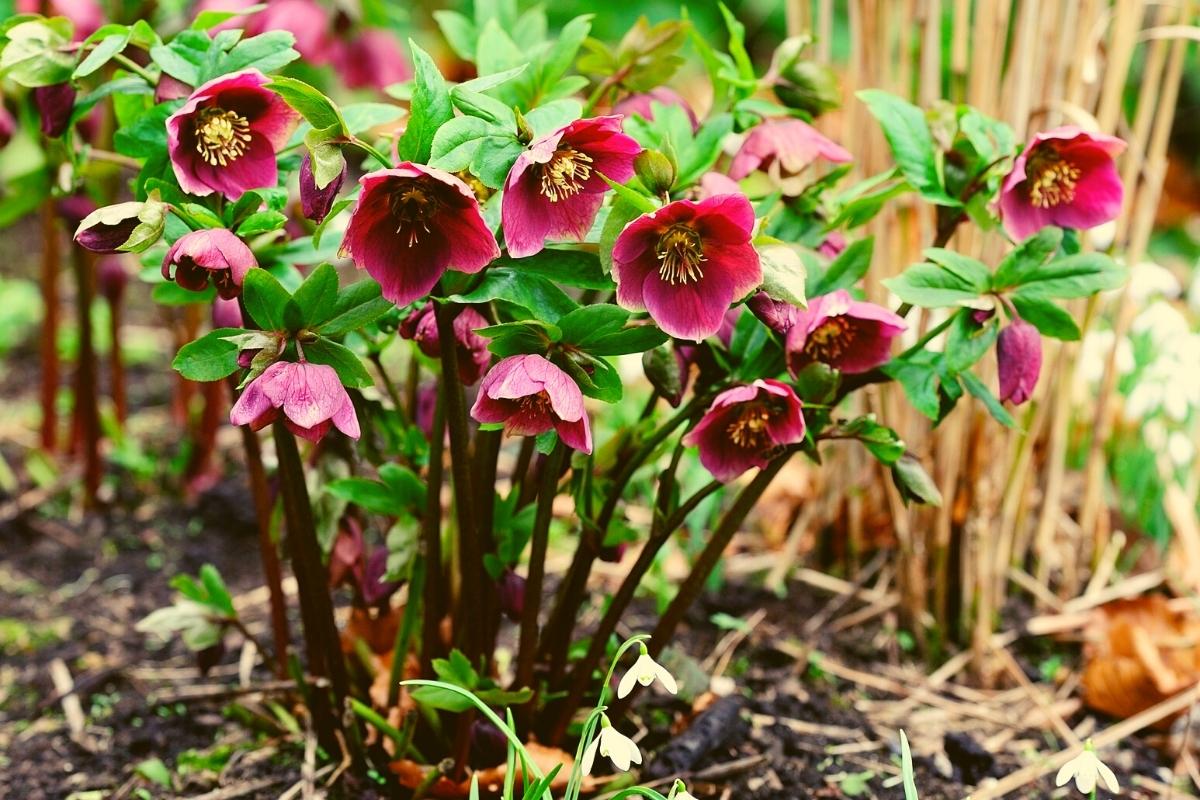Picking the right location for your hellebores is extremely important if you want them to thrive in the future. You should never underestimate the importance of picking a good location for your hellebores to grow, especially since they will need to fall into the range of the appropriate temperature and sunlight conditions to reach their full potential.
Table of Contents
Where To Plant Hellebores
Hellebores naturally crave sunlight and will require a specific amount of sunlight per day to grow properly. They are very tolerable of shady conditions, including partial shade and moderate shade. They will still need at least six hours of partial sunlight per day, which is why you should ensure that you find the right location to plant your hellebores.
Keep in mind that overwhelming amounts of shade in any specific location can harm the potential of your hellebores. Too much shade could reduce the flowering capabilities of your hellebores.
You’ll also want to plant them in well-drained soil for the best results. Some hellebores will tolerate other soil conditions, but it’s generally best for well-drained soil to be the location in which you plant your hellebore.
Locations and Droughts
It is probably important to remember that not all hellebores can tolerate droughts. In the early stages of growth, hellebores may suffer from exposure to droughts until they get established. You’ll need to make sure they are getting a reasonable amount of water initially.
Once your hellebores have had time to fully establish themselves in your desired location, they will start to develop the ability to handle dryer conditions for longer periods. The reason for this is that their root structure needs enough time to develop so that it can survive during periods where a drought exists.
Since hellebores are found in several parts of central Europe, you should try to plant them in locations that have reasonable amounts of sun and shade. These well-balanced conditions can be found in many places around the globe and will serve as great planting regions for your hellebores.
Your goal will be to find a location that receives temperatures around 65 degrees Fahrenheit. This is generally considered to be a great idling temperature for hellebores, especially throughout the day when the sun is out. California has ideal weather conditions for growing hellebore.
During the nighttime hours, it’s acceptable for hellebores to be exposed to temperatures lower than 45 degrees Fahrenheit. They can develop their roots and grow in these cold conditions to become stronger and more tenacious in the future. As hellebores build up their resiliency, they can start to handle harsher conditions that might not generally be ideal when they are initially growing.
Picking Locations With Sunlight and Shade
Too much shade will prevent your hellebores from producing as many flowers as you may like. Some hellebores may even struggle to survive if they are receiving an excessive amount of shade and not enough sunlight.
To reach your target of ideal flower growth, you should pick a location that receives at least some sunlight. At a minimum, hellebores need a few hours of sunlight per day.
Too much sunlight for your hellebores can also be harmful. Picking a location with a reasonable balance between sunlight and shade is important. These ideal locations generally receive partial shade throughout the day and provide the best range of temperatures for a growing hellebore plant.
While your location is very important in terms of finding the right amount of sunlight and shade, you should also try to make sure that they are planted in well-drained soil. You should also pick a location with adequate spacing to ensure there is no growth conflict for your hellebores. They tend to grow very well in woodland-type gardens. Source.
See our article for Hellebores Sun or Shade here.
Can You Plant Hellebores Under a Tree?
It is not a bad idea to find a location under a tree to plant your hellebores. This type of location may provide a solid balance between sunlight and shade as the sun transitions its position throughout the sky. The leaves of the tree above will provide moderate amounts of shade throughout the day, while the sun will also have an opportunity to peek through at times and reach the plant.
Sometimes planting your hellebores on a small hill or slope can be convenient. The angle may help your plant receive the right amount of sunlight as the daytime hours pass by.

Should All Hellebores Be Planted In Similar Regions?
Each variation of hellebore is generally excellent companions to each other. Since most hellebore varieties require similar regions to grow effectively, it is usually a favorable idea to plant them in the same types of locations.
If the appropriate spacing is available, you may even plant them adjacent to each other. You need to make sure that your hellebore plants are not planted too close to each other because that can create a lot of problems in the future.
Related Questions
Can hellebores die if the wrong location is chosen?
While hellebores can die from being planted in a poor location where temperatures and sunlight conditions are not ideal, it’s not very likely they’ll completely die. They may struggle to produce flowers if they are not in suitable locations and are not exposed to the right type of well-drained soil.
Can hellebores be planted in regions that experience long droughts?
Hellebores should not be exposed to conditions that are experiencing a drought until they have had time to establish and grow themselves. Once they are established, they can handle droughts. You may need to provide additional water maintenance to your hellebores until this process occurs.

